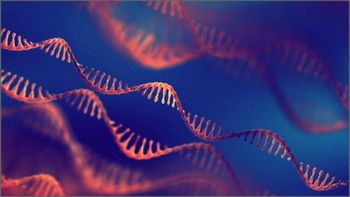
UHPSFC–MS/MS for Endogenous Steroid Detection
Lausanne University Hospital scientists recently tested ultrahigh-performance supercritical fluid chromatography hyphenated to tandem mass spectrometry (UHPSFC–MS/MS) for detecting urinary endogeneous steroids.
In a recent study led by scientists from Lausanne University Hospital in Geneva, Switzerland, ultrahigh-performance supercritical fluid chromatography hyphenated to tandem mass spectrometry (UHPSFC–MS/MS) was tested as an analysis method for detecting urinary endogenous steroids. Their findings, meant to help further anti-doping efforts in sports, were published in the Journal of Chromatography A (1).
Doping with endogenous steroids, such as testosterone (T), while highly prevalent, can be challenging to uncover. This is because such hormones are produced naturally, and alternations in urinary concentrations can also be due to medical conditions. To prove the exogenous origins of these steroids, the carbon isotope ratio (CIR) of the steroid(s) of interest in urine are often compared with the CIRs of endogenous reference compounds (ERC), or substances developed within an organism, in the suspect sample (2). The first step in this detection process is to measure the urinary steroid profile for the athlete biological passport (ABP). First approved by the World Anti-Doping Agency (WADA) in 2009, ABPs are used to monitor selected biological variables over time that indirectly reveal the effects of doping (3). To harmonize analysis between anti-doping laboratories, urinary steroid profiling is typically parametrized in deep detail and performed via gas chromatography–mass spectrometry (GC–MS). However, this technique often requires extensive sample preparation, which can be costly and time-consuming; as such, GC–MS alternatives are currently being actively pursued.
For this study, UHPSFC–MS/MS was tested as an alternative for quantifying endogenous urinary steroids. More specifically, first a high-throughput sample extraction method was developed, followed by a novel UHPSFC–MS/MS method for analyzing 10 endogenous urinary steroids. Depending on the steroid being searched for, the method proved capable of quantification from 0.5–10 µg/mL. After validation, the method’s applicability was evaluated by analyzing 132 authentic urine samples, which demonstrated results similar to classical GC–MS analysis. Compared to GC–MS, steroid concentrations determined by UHPSFC–MS/MS were slightly overestimated, though the ratios between the two methods had < 10% difference. As the ABP is used to consider steroid ratios for passport evaluation, this method could be used for steroid profiling without reducing ABP sensitivity. Though more tests must be performed to support their findings, the scientists believe their approach could be used for steroid profiling without reducing ABP sensitivity.
“With a simple manual fraction collection set-up, we could demonstrate that semi-preparative UHPSFC could be used as a fast alternative to semi-preparative high-performance liquid chromatography (HPLC),” the authors wrote (1).
No isotopic fractionation was found on correctly collected fractions, with the purity of the fractions being satisfactory. As such, the scientists concluded that UHPSFC could help purify urine samples prior to GC or isotope ratio mass spectrometry (IRMS) analysis. That said, to maximize sensitivity and robustness, injection parameters must be further optimized, with the scientists also recommending the use of an automated fraction collector.
References
(1) Langer, T.; Nicoli, R.; Guillarme, D.; Schweizer-Grundisch, C.; Rudaz, S.; Grabherr, S.; Kuuranne, T.; Musenga, A. A Novel Ultra-High-Performance Supercritical Fluid Chromatography Hyphenated to Tandem Mass Spectrometry Method for the Analysis of Urinary Endogenous Steroids in the Anti-Doping Context. J. Chromatogr. A 2024, 1734, 465224. DOI:
(2) Endogenous Compound. Elsevier B.V. 2024.
(3) Athlete Biological Passport. World Anti-Doping Agency 2024.
Newsletter
Join the global community of analytical scientists who trust LCGC for insights on the latest techniques, trends, and expert solutions in chromatography.




